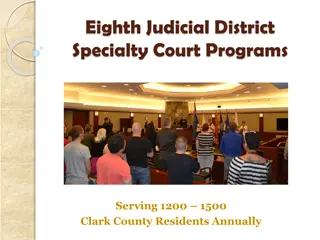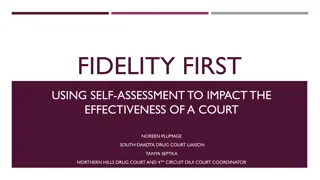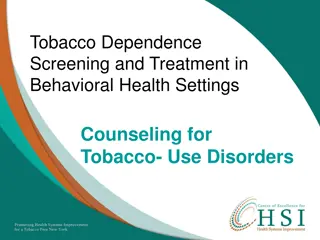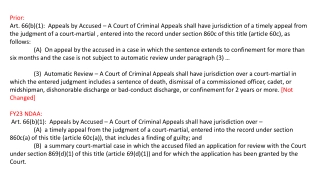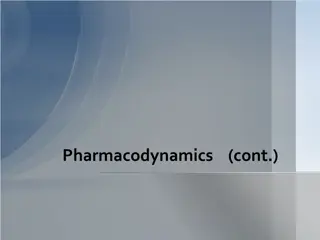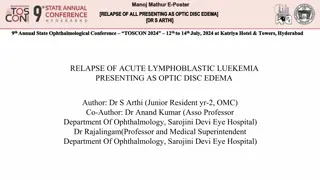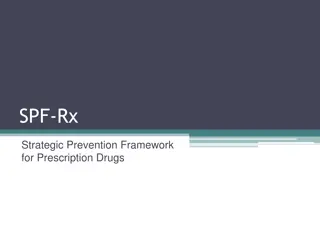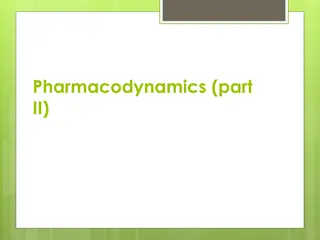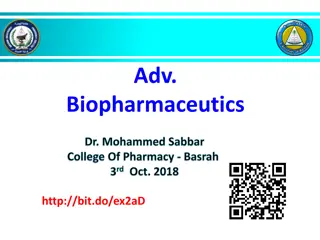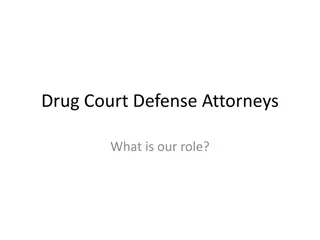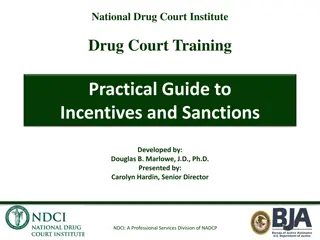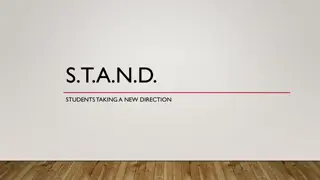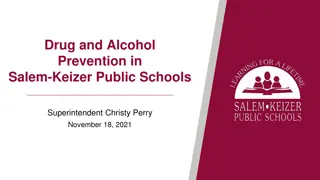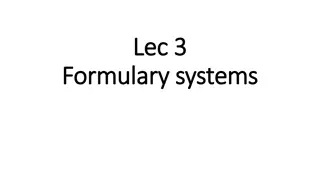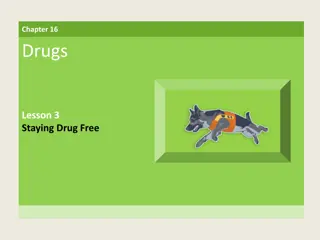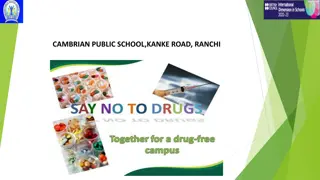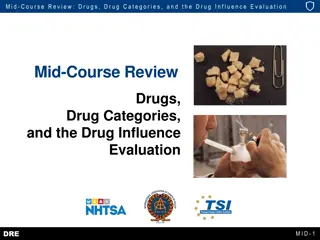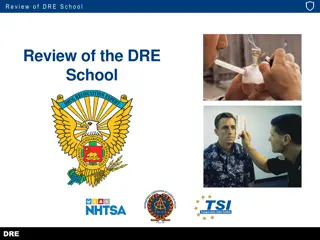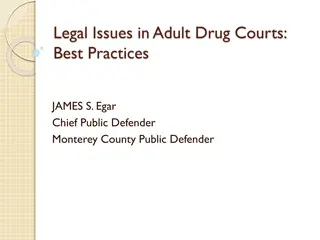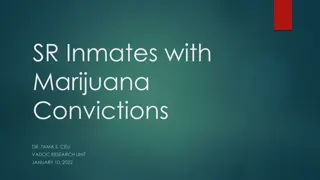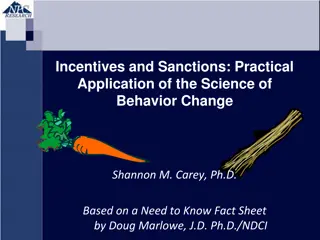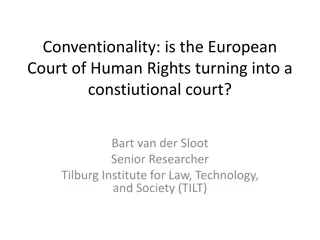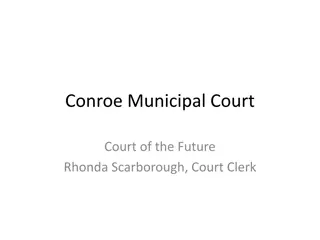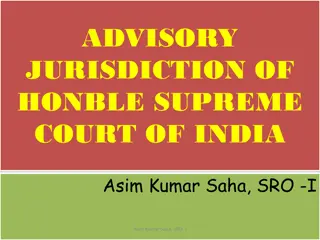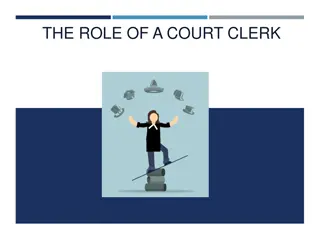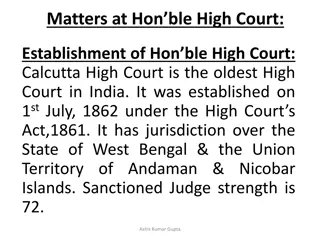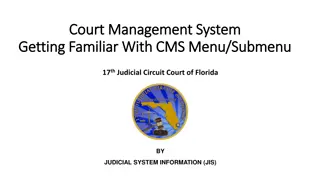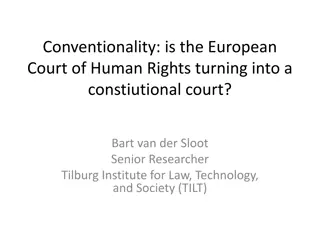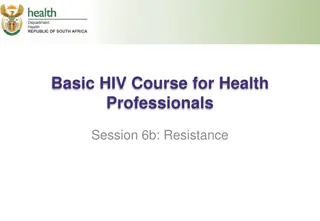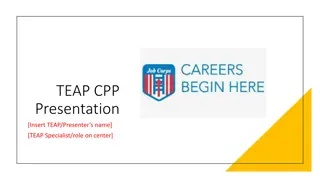Understanding Relapse Prevention and Response in Drug Court
Exploring the concepts of relapse prevention, response, and defining terms like relapse and recovery in the context of drug court programs. It discusses the difference between a slip and a relapse and emphasizes the importance of ongoing commitment to change in achieving total abstinence from substances.
Download Presentation

Please find below an Image/Link to download the presentation.
The content on the website is provided AS IS for your information and personal use only. It may not be sold, licensed, or shared on other websites without obtaining consent from the author. Download presentation by click this link. If you encounter any issues during the download, it is possible that the publisher has removed the file from their server.
E N D
Presentation Transcript
Keeping Keeping It Moving: It Moving: Relapse Prevention and Relapse Prevention and Response in Drug Court Response in Drug Court Terrence D Walton, MSW, ICADC Director of Treatment Pretrial Services Agency for the District of Columbia
True or False? Research shows that even while in treatment, some addicted people can only stay clean a couple of days before relapsing.
The 1stBig Question Is it relapse or continued use ?
Defining Relapse When a person in recovery returns to the self-prescribed, non-medical use of any mood altering chemical (MAC) and the risk of the problems associated with that use The return to use after a period of abstinence that interrupts the addicts ongoing attempts to recover A return to drug use that is precipitated by and/or leads to lessening of commitment to recover 1. 2. 3.
Defining Recovery In conjunction with a day-by-day commitment to remain abstinent, the ongoing process of overcoming physical and psychological dependence on mood altering chemicals and learning to live in a state of total abstinence, without the need for those substances. In recovery, the individual relies on healthy, constructive activities and experiences for happiness and fulfillment.
The 2ndBig Question Is it a slip or a relapse ?
A Slip Initial episode of alcohol or other drug use after a period of recovery/remission Does not indicate or precipitate a lessening in commitment to change Can end quickly or lead to a relapse of varying degrees
Slipping Neither a slip, nor relapse is accidentally using Both are willful decisions to use Slip = Set Back Relapse = Collapse Slip = Rapidly restored commitment to change Relapse = Recycling back through change stages
Two Secrets 1. No use doesn t mean you re in recovery 2. Use __________________________
Research Studies show relapse rates of 40% to 60% at one year follow-up Most relapses occur in the first year of recovery, with two thirds occurring in the first 90 days Clients who remain in treatment longer generally have the better outcomes 1. 2. 3.
Causes Pretreatment Factors Degree of substance dependence Co-occurring disorders Combat related trauma Treatment Factors Type, length and quality of treatment Post Treatment Factors Family/social supports Social/coping Skills Post treatment depression
Impact on the Individual Relapse is a persistent risk in recovery Consequences may include: Return to active use Criminal behavior Physical, social, or emotional collapse Re-commitment to recovery
Relapse An unfolding process in which the resumption of substance abuse is the last event in a long series of maladaptive responses to internal or external stressors or stimuli
WHAT IS RELAPSE PREVENTION? Therapy designed to teach people to engage in recovery-supportive activities and to recognize, anticipate, and manage the relapse warning signs so that they can interrupt the relapse process early and return to the process of recovery.
Relapse Prevention Planning Written, specific, and rehearsed plans Reiterates commitment to and rationale for recovery Outlines and schedules recovery supportive activities Identifies warning signs, cues, and high risk situations (triggers) Details preventive and progressive responses to all triggers 1. 2. 3. 4. 5.
A Big Resource National Registry of Evidenced-based Programs and Practices: www.nrepp.samhsa samhsa.gov Relapse Prevention Therapy
Green Light Problems Failing to engage fully in recovery-supportive activities 1. Skipping or coming late to meetings 2. Neglecting spiritual activities and readings 3. Skipping work or cutting class 4. Failing to plan and participate in leisure activities 5. Neglecting physical exercise, adequate sleep, or healthy diet
Yellow Light Problems Situations requiring caution, extra support, and/or prompt resolution Negative moods & attitudes (angry, afraid, sad, lonely, hurt, guilty, bored, anxious, embarrassed, frustrated, rebellion, resentful, stubborn) Fleeting cravings, urges, or euphoric recall Holidays, celebrations; vacations, and other down-time ; Sleeping (using dreams) Dishonesty, greed, or having extra money Feeling depleted, deprived, entitled or exhausted Sobriety milestones Re-entering from institutions 1. 2. 3. 4. 5. 6. 7.
Red Light Problems Situations to avoid, persistently resist, and/or requiring urgent external support Offers to use or drink Persistent cravings, urges, or euphoric recall Feeling hopeless, like giving up, or not caring Euphoric recall Sudden, unexpected external triggers (sound, sight, smell, taste, sensation) Trauma reactions A slip 1. 2. 3. 4. 5. 6. 7.
Relapse Response Planning 1. Written & specific plans 2. Detailing immediate post-use actions 3. Full disclosure Who is to be informed immediately Program to be informed at first opportunity 4. Expected & accepted consequences 5. Plan for re-evaluation and intervention
Responses to Relapse Reassess Continued Use Potential and Change Readiness Conduct Functional Analysis of Relapse Determine Whether Continued Use , Slip , Relapse Apply Planned Court-related or Supervision- Related Responses (e.g. sanction, phase freeze, staffing) Apply Planned Clinical Responses (e.g., enhancing treatment, increase drug/alcohol testing) Re-stabilize and Re-engage (e.g. detoxification, treatment readiness); Re-instill hope 1. 2. 3. 4. 5. 6.
Honesty Matters 1. Participant lies about using even after testing positive. 2. Participant readily admits using after testing positive. 3. Participant admits using before testing positive. 4. Participant admits thoughts of using before doing so.
Program Response Tips 1. Continued use or dishonesty usually sanctioned more severely than a readily acknowledged relapse/slip 2. Relapse prevention and response planning should be implemented early in the treatment process 3. Prepare to respond to repeated continuing use or relapses/slips in some participants, especially early in treatment
Relapse Prevention and Relapse Prevention and Response in Drug Court: Response in Drug Court: Terrencewalton@aol.com



